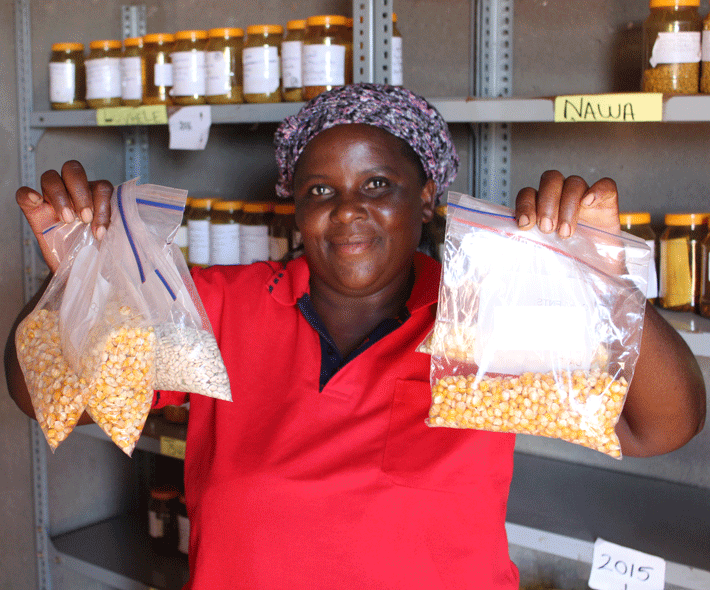How to develop and manage your own community seedbank

Ronnie Vernooy, Genetic Resources Policy Specialist, Bioversity International, reports on a new handbook for farmers who want to establish or strengthen community seedbanks.
What is a community seedbank?
Community seedbanks are mainly informal institutions, locally governed and managed, whose core function is to preserve seeds for local use. The farmers who run community seedbanks handle major crops, minor crops, and neglected and underutilized species, sometimes in small quantities, sometimes storing hundreds of kilogrammes.
Why is this handbook important?
Establishing and operating a community seedbank is easier said than done. It not only requires technical knowledge about seed management, but also organizational knowledge about planning and working together for the benefit of the community. When farmers succeed to blend these two types of knowledge, a successful community seedbank can become reality.
In 2017, we published a community seedbank handbook for facilitators intended for people working directly with farmers, who are motivated to set up a community seedbank or who want to strengthen the operations of a community seedbank that already exists. Such facilitators can be NGO staff, researchers, plant genetic resource centre (genebank) employees, or government extension agents who want to become more knowledgeable about the concept and practice of community seedbanks. They could be leading a process to establish one or more community seedbanks and/or conducting training sessions for community members about the concept and practice of a community seedbank.
Why do farmers specifically need their own handbook?
To complement the facilitator handbook, we are pleased to announce the publication of a farmer’s handbook consisting of a series of three short booklets specifically written and designed to be used by community members involved in, or wanting to be involved in, a community seedbank. The booklets contain easy to understand language, present key points and include many photographs that illustrate the text. Farmers can use the booklets on their own, individually or in a group, to plan and implement community seedbank activities and to monitor progress. Each booklet focuses on a theme presented by the members of a community seedbank in Africa, Asia and Latin America:
- Booklet 1 takes us to South Africa and is about establishing a community seedbank.
- Booklet 2 takes us to India and is about technical issues concerning seed management.
- Booklet 3 takes us to Guatemala and is about management, networking and policy issues.
How do I get the handbook?
Either download the three booklets, which together form the handbook, from the Bioversity International website (links above) or email Ronnie Vernooy for a paper copy.
Find out more about community seedbanks
Partners:
Both handbooks are the outcome of the research and capacity-development activities surrounding community seedbanks supported by the Department of Agriculture, Forestry and Fisheries (DAFF) of the government of South Africa. The French and Spanish versions of the farmer’s handbook were made possible by the support of the Directorate-General for International Cooperation, Ministry of Foreign Affairs, the Netherlands. The work in South Africa is part of the CGIAR Research Program on Climate Change, Agriculture and Food Security (CCAFS) and is supported by CGIAR Fund Donors.
